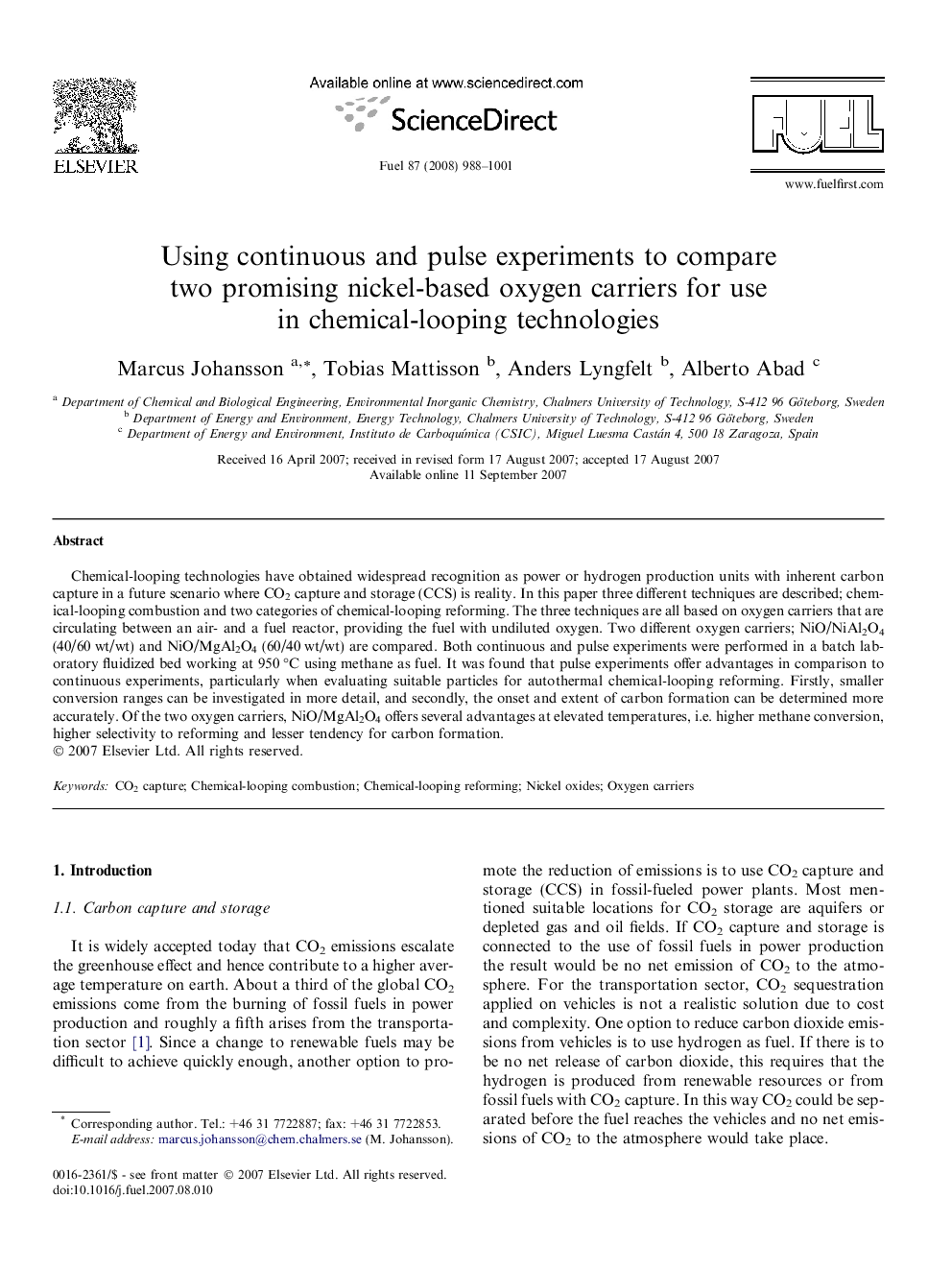| Article ID | Journal | Published Year | Pages | File Type |
|---|---|---|---|---|
| 207777 | Fuel | 2008 | 14 Pages |
Chemical-looping technologies have obtained widespread recognition as power or hydrogen production units with inherent carbon capture in a future scenario where CO2 capture and storage (CCS) is reality. In this paper three different techniques are described; chemical-looping combustion and two categories of chemical-looping reforming. The three techniques are all based on oxygen carriers that are circulating between an air- and a fuel reactor, providing the fuel with undiluted oxygen. Two different oxygen carriers; NiO/NiAl2O4 (40/60 wt/wt) and NiO/MgAl2O4 (60/40 wt/wt) are compared. Both continuous and pulse experiments were performed in a batch laboratory fluidized bed working at 950 °C using methane as fuel. It was found that pulse experiments offer advantages in comparison to continuous experiments, particularly when evaluating suitable particles for autothermal chemical-looping reforming. Firstly, smaller conversion ranges can be investigated in more detail, and secondly, the onset and extent of carbon formation can be determined more accurately. Of the two oxygen carriers, NiO/MgAl2O4 offers several advantages at elevated temperatures, i.e. higher methane conversion, higher selectivity to reforming and lesser tendency for carbon formation.
